Nov 02, 2010
Hot Summers of 1988 and 2010 - Did CO2 help us get thru this time without major crop losses?
By Joseph D’Aleo, CCM
Both 1988 and 2010 were hot summers where a strong La Nina developed following a moderately strong El Nino winter. 2010 was the fourth warmest for the United States and 1988 the sixth hottest (out of 116 years in the United States climate record).
1988 had a major drought that led to over $40 billion in crop losses. USDA reported corn yields dropped 36% from the prior year and soybeans dropped 22%. 2010 soybean yields were the highest on record. Corn was down 3% from last year’s record crop.
The summer heat was unusual - more records were set for elevated minimums than record highs. For example in Detroit, it was a record hot summer. No record highs were set. Nighttime temperatures were elevated by high moisture (dewpoints). When you look at record summer highs by decade in Detroit you see the 1930s clearly dominates. The 1980s come in second.
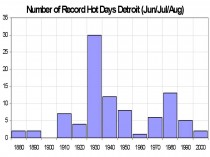
Enlarged here.
New York reached 100F on two days in early July.
They were daily records. The summer was record warm but those were the only daily records set. How does that compare historically?
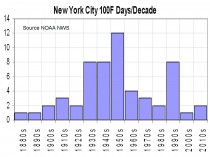
Enlarged here.
In New York City, 100 degree days were common from the 1930s to the 1950s (the warmest decade). 1990s showed another spike. Again no upward trend is evident.
In sharp contrast June/July in 2009 were the 3rd coldest such period since records began over 130 years ago. How quickly we forget.
For the 50 states, the monthly (all 12 months) heat and cold records show this same pattern with the 1930s dominating the heat records. The 2000s had fewer heat records than any decade since the 1880s. The NOAA/NCAR/IPCC claims that heat waves in the United States and world are rapidly increasing is patently false.
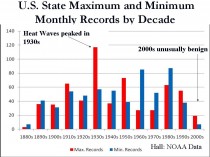
Enlarged here.
But let’s get back to the difference in crops. A number of factors may have played a role.
ANTECEDENT CONDITIONS
During the mid to late spring, soil moisture deficits were extensive and expanding in the growing areas in 1988. Since drought begets drought, conditions deteriorated further as summer heat set in. In 2010, soil moisture was more than adequate after a snowy winter. That helped feed heavier than normal precipitation in the prime growing areas. Beans thrive in heat (unless extreme) if there is sufficient soil moisture.
LOW SOLAR, HIGH PERSISTENCE
When sun is quiet, the patterns tend to persist. That has been the case the last few years. The patterns in both the warm and cold seasons has tended to persist. This aggravates the seasonal anomalies and can allow extremes to build. We have seen that in many locations worldwide the last few years.
That is why this summer, the east and south central had the warmest summer on record in some locations with few or no record daily highs. It helps explain why some other locations like California had the coldest or second coldest summer on record. It explains the Russian heat wave and drought in some of the same areas that had one of the coldest (or the coldest) and snowiest winter on record. And why areas downstream (Pakistan) had record floods as the downstream trough from the heat ridge amplified the summer monsoon rain band over Pakistan and parts of India (map from New Scientist).
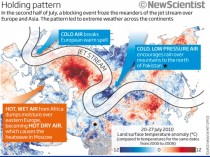
Enlarged here.
CARBON DIOXIDE, THE GAS OF LIFE
Another factor not discussed is CO2. CO2 is a plant fertilizer. Even the UN has shown crop yields increase as CO2 increases.

Enlarged here.
CO2 enriched crops are more vigorous and more drought resistant. They shade the ground and keep down solar induced ground evaporation down. This reduces water needs. NASA found that crop yields had increased 30% in the Northern Hemisphere in the last 50 years with an increase of 10% in arable land. Some of this is better hybrids, better fertilizers, pesticides and insecticides but CO2 is playing a key role.
This is one of the CO2 benefits they won’t talk about. We do have real issues in the world with water pollution, air pollution, toxins in the environment, insects and disease. Instead of focusing our attention on these real problems the world led by the corrupt UN and government, corporate and university profiteers is wasting resources dealing with a beneficial gas.
That is why when a panel of eight leading economists in the Copenhagen Consensus project, including five Nobel laureates organized by Bjorn Lomborg prioritized a list of 30 efforts that made economic sense (best cost benefit ratios) for the world to pursue, global warming R&D and mitigation ranked 29th and 30th.
See PDF here.
Nov 02, 2010
Global Warming Elitism, Today’s Election, and The Future
By Dr. Roy Spencer
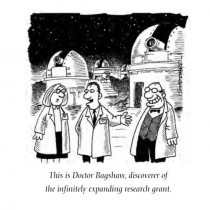
Enlarged here.
The NASA A-Train satellite constellation symposium I attended last week in New Orleans was in some sense a celebration of the wide variety of global satellite observations we are now collecting from Earth orbit. This really is the Golden Age in satellite data collection of the global climate system. While a few A-Train satellites are still to be launched, other older satellite assets in the A-Train are now operating well past their planned lifetimes. There are no plans to replace many of these one-of-a-kind instruments, so much of what we will learn in the coming years will have to come from the analysis of previously collected data.
Unfortunately - at least in my opinion - the existence of this superb national resource depended upon convincing congress almost 2 decades ago that manmade global warming was a clear and present danger to the world.
Manmade Global Warming as the Justification
Since I believe the majority of what we now view as “climate change” is just part of a natural cycle in the climate system, I argued from the outset that NASA should be also selling “Mission to Planet Earth” as a way to better prepare ourselves for natural climate change - something that history tells us has indeed occurred, and we can be assured will occur again.
But behind the scenes there was a strong push for policy changes that even most of the scientists involved supported - ultimately culminating in the governmental control over how much and the kinds of energy sources humanity would be allowed to use in the future. Cap and Trade, as well as potential regulation of carbon dioxide emissions by the EPA, are the fruits of the labor of politicians, governmental representatives, bureaucrats, the United Nations, and activist scientists who have used global warming as an excuse to accomplish policy goals that would have never been accomplished on their own merits.
Of course, most who speak out on this issue continue to point to the supposed “scientific consensus” on global warming as the justification, but those of us who knew the players also knew of these other motives. I am often asked, “So, are you saying there is a conspiracy here?” No, because the ultimate goals were not a secret. Just a bunch of elitists carrying out plans that the politicians supported - with continuing promises of congressional funding for research that those politicians knew would support Job #1 of government - to stay needed by the people. Many of the scientists involved are just along for a ride on the gravy train. Even I ride that train.
The elitism clearly shows through in the behavior of those who speak out publically on the need for humanity to change its Earth-destroying ways: Al Gore, James Cameron, Harrison Ford, Julia Roberts, RFK, Jr. These people apparently believe they are God’s gift to humanity. How else can we explain that they do not see the hypocrisy the rest of the nation sees in their behavior?
Unfortunately, I saw this attitude on a smaller scale at the New Orleans meeting. There are many new, young scientists now joining the ranks. They are being mentored by the older scientists who helped spread the alarm concerning manmade global warming. And they will be rewarded for playing the game. Or will they?
The Times They Are A-Changin’
How is it that government agencies long ago decided to put all their eggs in the manmade global warming basket? Why have the movers and shakers around the world ignored natural climate change - even going so far as to claim it does not exist? The only reason I can think of again goes back to their elitist beliefs and desired policy outcomes. The belief that a better-educated few should be allowed power over the less educated masses. That government knows better than the people do.
This election is widely viewed as a referendum on the proper role of government in people’s lives. There is no question that the founders of our country intended there to be maximum of freedom on the part of individuals and the states, while placing strong limits on the role of the federal government. Just read the Declaration of Independence if you want to see how pi$!ed off the settlers of the original colonies became at the King of England over his intrusion into their personal affairs. And global warming legislation is now quite possibly the best opportunity the governments of the world have to increase the role of government in people’s lives.
The Basic Economics of Individual Freedom
Yet, many Americans believe that government can more equitably distribute the wealth generated by a country. This is a laudable goal on the face of it.
Unfortunately, history has taught us that trying to impose equality of outcomes only serves to make people equally miserable. I like to think that I know something about basic economics. It was the subject of the 6th chapter in my first book - Climate Confusion - which received a nice blurb on the jacket from noted economist Walter Williams.
One of the reasons I am willing to stick my neck out and inform people of the uncertain nature of government-approved global warming science is because the basic economics behind any governmental (or environmental extremist) attempts to restrict personal choice in energy use will end up killing people. In fact, it already has.
The biggest threat to humanity is poverty. Wealthier is healthier. When governments make energy more expensive, or environmental organizations pressure foreign countries to not build hydroelectric dams, poor people die. Those already living on the edge are pushed over the edge. Energy is required for everything we do, and artificially raising the price of energy cannot help but destroy wealth generation.
If these elitists really were interested in the poor, they would be doing everything they could to help individuals take control of their own economic destinies. One billion people in the world still do not have electricity. Worried about population growth? Then encourage the generation of wealth. It is the poor of the world that cause global population growth. The wealthy countries of the world have close to zero population growth.
Of course the main argument against this view is “sustainability”. Can the Earth sustain even more people consuming natural resources? Interesting how those who ask the question have already gotten theirs, and now want to prevent others from doing the same. But I would ask, can the world sustain the poverty-stricken? Poor countries have had most of their trees cut down. Imagine if global society collapsed and billions of people had to make do on their own with what they could scavenge from nature. Now THAT would lead to a pollution problem.
What ensures sustainability is free markets. As natural resources of one type become more scarce, their price goes up, which makes alternatives more attractive. People are incentivized to develop new answers to old technological problems. This is why fossil fuels will never be used up. At some point, they simply will become too expensive to extract. Mass production by factories and corporations should be embraced, rather than derided. It represents the most efficient way of providing goods and services. Waste is minimized because it hurts competitiveness.
But What About Equality?
Equality of outcomes is an illusion. It can never be achieved...unless we totally destroy the people’s motivation to make a better life for themselves. A vibrant economy is what maximizes the tax revenue collected by the government. The two largest periods of growth in tax revenue collected by the government occurred after two major tax-CUTTING initiatives: JFK’s in the early 1960’s, and Reagan’s in the early 1980’s.
If you really want to help the poor, then help the country grow economically. Want to make sure the poor are taken care of? Then encourage businesses to grow, which will lead to more jobs. Economic activity is what is needed, and since the tax revenue the government receives is a “piece of the action”, more action means more money for government programs.
And whether we like it or not, the only way to ensure this growth happens is to give business owners and entrepreneurs some hope that their risk-taking and creativity will pay off for them personally in the future.
Yes, in the process, some people will get rich. A few will get obscenely rich. But this only occurs because so many consumers want the goods and services those rich few can offer them. Call it a necessary evil, if you must. But it is, indeed, necessary. The end result will be more money for the poor, not less.
A New Fight Begins
The basic economics and desire to help the poor that have motivated me to speak out in the last 20 years on global warming policy will be the subject of a national debate regarding the proper role of government in helping its people. The election is only the start. From then on, education about the practical importance of economic freedom will be central to that debate.
There is no question that our country has an unsustainable growth in our yearly budget deficits, and our total national debt is staggering. Everyone agrees this must change. And reducing government expenditures must, of course, be part of the debate. But increasing tax revenue to help support those programs is ALSO part of the solution. And since the only demonstrated (and sustainable)way to accomplish this is to grow the economy, it requires personal economic freedom.
So, what is the primary role of government in all this? In my opinion, it is two-fold: (1) make sure people play fair, and (2) get out of the way.
Oct 28, 2010
Heresy and the creation of monsters
by Judith Curry
I’m having another “Alice down the rabbit hole” moment, in response to the Scientific American article, the explication of the article by its author Michael Lemonick, Scientific American’s survey on whether I am a dupe or a peacemaker, and the numerous discussions in blogosphere. My first such moment was in 2005 in response to the media attention associated with the hurricane wars, which was described in a Q&A with Keith Kloor at collide-a-scape. While I really want to make this blog about the science and not about personalities (and especially not about me), this article deserves a response.
The title of the article itself is rather astonishing. The Wikipedia defines heresy as: “Heresy is a controversial or novel change to a system of beliefs, especially a religion, that conflicts with established dogma.” The definition of dogma is “Dogma is the established belief or doctrine held by a religion, ideology or any kind of organization: it is authoritative and not to be disputed, doubted, or diverged from.” Use of the word “heretic” by Lemonick implies general acceptance by the “insiders” of the IPCC as dogma. If the IPCC is dogma, then count me in as a heretic. The story should not be about me, but about how and why the IPCC became dogma.
And what exactly is the nature of my challenges to the dogma? Lemonick made the following statement: “"What I found out is that when [Curry] does raise valid points, they’re often points the climate-science community already agrees with - and many climate scientists are scratching their heads at the implication that she’s uncovered some dark secret.” This statement implies that I am saying nothing new, nothing that climate scientists don’t already know. Well that is mostly true (an exception being my recent blog series on uncertainty); I am mostly saying things that are blindingly obvious to everyone. Sort of like in the story “The Emperor’s New Clothes.” A colleague of mine at Georgia Tech, a Chair from a different department, said something like this: “I’ve been reading the media stories on the Georgia Tech Daily News Buzz that mention your statements. Your statements seem really sensible. But what I don’t understand is why such statements are regarded as news?”
Well that is a question that deserves an answer. I lack the hubris to think that my statements should have any public importance. The fact that they seem to be of some importance says a lot more about the culture of climate science and its perception by the public, than it says about me.
The narrative
Why am I being singled out here? Richard Lindzen and Roger Pielke Sr. have been making far more critical statements about the IPCC and climate science for a longer period than I have. And both score higher than me in the academic pecking order (in terms of number of publications and citations and external peer recognition).
The answer must be in the narrative of my transition from a “high priestess of global warming” to engagement with skeptics and a critic of the IPCC. The “high priestess of global warming” narrative (I used to see this term fairly frequently in the blogosphere, can’t spot it now) arose from my association with the hurricane and global warming issue, which at the time was the most alarming issue associated with global warming.
The overall evolution of my thinking on global warming is described in the Q&A at collide-a-scape (the relevant statements are appended at the end of this post.) My thinking and evolution on this issue since 11/19/09 deserves further clarification. When I first started reading the CRU emails, my reaction was a visceral one. While my colleagues seemed focused on protecting the reputations of the scientists involved and assuring people that the “science hadn’t changed,” I immediately realized that this could bring down the IPCC. I became concerned about the integrity of our entire field: both the actual integrity and its public perception. When I saw how the IPCC was responding and began investigating the broader allegations against the IPCC, I became critical of the IPCC and tried to make suggestions for improving the IPCC. As glaring errors were uncovered (especially the Himalayan glaciers) and the IPCC failed to respond, I started to question whether it was possible to salvage the IPCC and whether it should be salvaged. In the meantime, the establishment institutions in the U.S. and elsewhere were mostly silent on the topic.
In Autumn 2005, I had decided that the responsible thing to do in making public statements on the subject of global warming was to adopt the position of the IPCC. My decision was based on two reasons: 1) the subject was very complex and I had personally investigated a relatively small subset of the topic; 2) I bought into the meme of “don’t trust what one scientists says, trust what thousands of IPCC scientists say.” A big part of my visceral reaction to events unfolding after 11/19 was concern that I had been duped into supporting the IPCC, and substituting their judgment for my own in my public statements on the subject. So that is the “dupe” part of all this, perhaps not what Lemonick had in mind.
If, how, and why I had been duped by the IPCC became an issue of overwhelming personal and professional concern. I decided that there were two things that I could do: 1) speak out publicly and try to restore integrity to climate science by increasing transparency and engaging with skeptics; and 2) dig deeply into the broader aspects of the science and the IPCC’s arguments and try to assess the uncertainty. The Royal Society Workshop on Handling Uncertainty in Science last March motivated me to take on #2 in a serious way. I spent all summer working on a paper entitled “Climate Science and the Uncertainty Monster,” which was submitted to a journal in August. I have no idea what the eventual fate of this paper will be, but it has seeded the uncertainty series on Climate Etc. and its fate seems almost irrelevant at this point.
Monster creation
There are some parallels between the “McIntyre monster” and the “Curry monster.” The monster status derives from our challenges to the IPCC science and the issue of uncertainty. While the McIntyre monster is far more prominent in the public debate, the Curry monster seems far more irksome to community insiders. The CRU emails provide ample evidence of the McIntyre monster, and in the wake of the CRU emails I saw a discussion at RealClimate about the unbridled power of Steve McIntyre. Evidence of the Curry monster is provided by this statement in Lemonick’s article: “What scientists worry is that such exposure means Curry has the power to do damage to a consensus on climate change that has been building for the past 20 years.” This sense of McIntyre and myself as having “power” seems absurd to me (and probably to Steve), but it seems real to some people.
Well, who created these “monsters?” Big oil and the right-wing ideologues? Wrong. It was the media, climate activists, and the RealClimate wing of the blogosphere (note, the relative importance of each is different for McIntyre versus myself). I wonder if the climate activists will ever learn, or if they will follow the pied piper of the merchants of doubt meme into oblivion.
A note to my critics in the climate science community
Let me preface my statement by saying that at this point, I am pretty much immune to criticisms from my peers regarding my behavior and public outreach on this topic (I respond to any and all criticisms of my arguments that are specifically addressed to me.) If you think that I am a big part of the cause of the problems you are facing, I suggest that you think about this more carefully. I am doing my best to return some sanity to this situation and restore science to a higher position than the dogma of consensus. You may not like it, and my actions may turn out to be ineffective, futile, or counterproductive in the short or long run, by whatever standards this whole episode ends up getting judged. But this is my carefully considered choice on what it means to be a scientist and to behave with personal and professional integrity.
Let me ask you this. So how are things going for you lately? A year ago, the climate establishment was on top of the world, masters of the universe. Now we have a situation where there have been major challenges to the reputations of a number of a number of scientists, the IPCC, professional societies, and other institutions of science. The spillover has been a loss of public trust in climate science and some have argued, even more broadly in science. The IPCC and the UNFCCC are regarded by many as impediments to sane and politically viable energy policies. The enviro advocacy groups are abandoning the climate change issue for more promising narratives. In the U.S., the prospect of the Republicans winning the House of Representatives raises the specter of hearings on the integrity of climate science and reductions in federal funding for climate research.
What happened? Did the skeptics and the oil companies and the libertarian think tanks win? No, you lost. All in the name of supporting policies that I don’t think many of you fully understand. What I want is for the climate science community to shift gears and get back to doing science, and return to an environment where debate over the science is the spice of academic life. And because of the high relevance of our field, we need to figure out how to provide the best possible scientific information and assessment of uncertainties. This means abandoning this religious adherence to consensus dogma.
Read more here.
Oct 21, 2010
Climatism: That Climate Change Chameleon
By Steve Goreham, The American Thinker
Climatism, the belief that man-made greenhouse gases are destroying Earth’s climate, is a remarkably flexible ideology. Calling it “global warming” for many years, advocates then renamed the crisis “climate change” after the unexpected cooling of global surface temperatures from 2002-2009. Last month, John Holdren, Director of the Office of Science and Technology Policy, urged everyone to start using the term “global climate disruption.” What’s next—“catastrophic climate calamity”?

Cape Dwarf Chameleon—Photo by Sharp
Decreasing snowfall was once claimed as an indication of man-made climate change. After years of declining snowfall in England, Dr. David Viner, senior scientist at the Climate Research Unit of East Anglia, predicted that winter snowfall would become “a very rare and exciting event.” Others predicted that snow cover in the United Kingdom would disappear by 2020. But last winter, at the same time that much of the eastern U.S. received record snowfalls, the U.K. was entirely blanketed by snow, as shown in the following NASA satellite photograph—a rare occurrence.
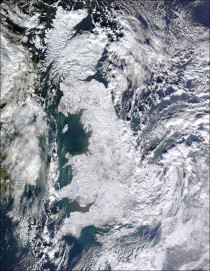
The heavy snow in England was very embarrassing for the U.K. Meteorological Office, which had predicted a mild winter. So what have the alarmists done? Attend almost any lecture today by an advocate of man-made global warming and you’ll find that “heavy snowfall” is now included on the list of impacts from climate change. Now both heavy snow and lack of snow are evidence of man-made warming.
To anyone who studies geologic history, the 1.3F rise in global surface temperatures over the last century is unremarkable. Yet the Intergovernmental Panel on Climate Change of the United Nations calls this rise “unprecedented” and labels it evidence of man-made climate change. This recent temperature rise is well within the +/-2.5F range of Earth’s average surface temperature over the last ten thousand years. It’s a remarkably small change, given the titanic forces exerted on our world by the sun, the planets, and Earth’s own terrestrial forces of weather and ocean cycles. Even though the average surface temperature of Earth has stayed in a narrow range, local temperatures vary widely. In Chicago, for example, the average annual range is from about -5F to +95F. Such wide local variation means that a “hundred-year weather event” is occurring somewhere on our planet at any given time.
Climatism uses these local weather variations, and increasingly the term “climate volatility,” to raise alarm. A recent example is the August report from the World Bank warning that “climate volatility” is expected to “worsen poverty vulnerability in developing countries.” This year, we’ve had drought in Russia and record floods in Pakistan. Both occurrences were seized upon by climate alarmists as evidence of increasing man-made climate volatility. Record cold temperatures in July in Bolivia, which killed millions of fish in South American rivers, were ignored. Natural local weather events, selectively amplified, provide an endless source of fodder for promoting the coercive governmental policies of Climatism.
Yet, scientific evidence shows that weather would be less extreme in a warmer world. Peer-reviewed studies on droughts, floods, hurricanes and storms show that 20th Century occurrences have been of equal or lesser severity than similar events in past centuries, when Earth’s climate was in the cooler period of the Little Ice Age. The bulk of science shows that today’s climate is not more volatile as alarmists claim.
The latest initiative from the climate change chameleon is to frame global warming as detrimental to the health of U.S. citizens. On September 28, a joint letter from 120 of America’s health organizations was delivered to President Obama, supporting efforts by the Environmental Regulatory Agency to regulate greenhouse gases. The letter claims that man-made global warming is now a U.S. public health issue especially for “older adults.” Yet senior citizens continue to retire to Florida, Texas, and Arizona rather than North Dakota and Minnesota. Don’t they know that warmer temperatures are a serious health risk? See post here.
Steve Goreham is Executive Director of the Climate Science Coalition of America and author of Climatism! Science, Common Sense, and the 21st Century’s Hottest Topic.
Oct 19, 2010
Climate change ‘fraud’ letter: a Martin Luther moment in science history
By Anthony Watts, Christian Science Monitor October 19, 2010
Esteemed physicist Harold Lewis is calling global warming the ‘most successful pseudoscientific fraud I have seen.’ His resignation letter could mark the unraveling of one of the great scientific mistakes in history and the beginning of a needed reformation of the scientific community.

In this 1872 painting by Ferdinand Pauwels, Martin Luther nails his “95 Theses” to the door of the castle church in Wittenberg, Germany on Oct. 31, 1517
Five centuries ago, a German priest challenged the reigning theological “consensus” about the clerical sale of indulgences, unraveling one of the great religious scams in history and inspiring the Protestant Reformation.
This month, a senior American physicist challenged the reigning scientific “consensus” about global warming. His action may prove to be the unraveling one of the great scientific mistakes in history and the beginning of a greatly needed reformation of the scientific community.
Revulsion over fraud
Just as Martin Luther paid the price for his dissent, Dr. Harold Lewis is experiencing a sharp backlash in the wake of his Oct. 6 resignation letter from the prestigious American Physical Society (APS). After 67 years as a member, Dr. Lewis - emeritus professor of physics and former department chairman at the University of California, Santa Barbara - parted ways because of his “revulsion” over the climate change “fraud” perpetrated by what he felt was science distorted by money.
Other esteemed scientists have in recent years put forward compelling critiques of the technical and scientific case for anthropogenic climate change. Dr. Lewis’s resignation letter is not such a critique. Rather, it is a condemnation of the way ideology, politics, and money have suppressed dissenting viewpoint and distorted the very nature of scientific inquiry. Like the so-called Climategate controversy, in which hacked emails from a group of climate scientists revealed political and personal factors influencing scientific work, Lewis’ letter lays bare the less-than-noble motivations that seem to be driving discussion of climate-change research today.
The APS position: ‘incontrovertible’
To understand Lewis’s letter, you first have to understand the APS position on climate change. The APS, like several other major scientific organizations, supports the theory of man-caused global warming. Its official statement from 2007 read, in part: “The evidence is incontrovertible: Global warming is occurring. If no mitigating actions are taken, significant disruptions in the Earth’s physical and ecological systems, social systems, security and human health are likely to occur. We must reduce emissions of greenhouse gases beginning now.... The APS also urges governments, universities, national laboratories and its membership to support policies and actions that will reduce the emission of greenhouse gases.”
This statement troubled Lewis deeply. These key excerpts from Lewis’s resignation letter explain why:
“[T]he money flood has become the raison d’etre of much physics research, the vital sustenance of much more, and it provides the support for untold numbers of professional jobs. For reasons that will soon become clear my former pride at being an APS Fellow all these years has been turned into shame, and I am forced, with no pleasure at all, to offer you my resignation from the Society.
It is of course, the global warming scam, with the (literally) trillions of dollars driving it, that has corrupted so many scientists, and has carried APS before it like a rogue wave. It is the greatest and most successful pseudoscientific fraud I have seen in my long life as a physicist. Anyone who has the faintest doubt that this is so should force himself to read the ClimateGate documents, which lay it bare.... I don’t believe that any real physicist, nay scientist, can read that stuff without revulsion.
1. About a year ago a few of us sent an e-mail on the subject to a fraction of the membership. APS ignored the issues, but the then President immediately launched a hostile investigation of where we got the e-mail addresses. In its better days, APS used to encourage discussion of important issues, and indeed the Constitution cites that as its principal purpose. No more. Everything that has been done in the last year has been designed to silence debate
2. The appallingly tendentious APS statement on Climate Change was apparently written in a hurry by a few people over lunch, and is certainly not representative of the talents of APS members as I have long known them. So a few of us petitioned the Council to reconsider it. One of the outstanding marks of (in)distinction in the Statement was the poison word incontrovertible, which describes few items in physics, certainly not this one. In response APS appointed a secret committee that never met, never troubled to speak to any skeptics, yet endorsed the Statement in its entirety. (They did admit that the tone was a bit strong, but amazingly kept the poison word incontrovertible to describe the evidence, a position supported by no one.)…
3. In the interim the ClimateGate scandal broke into the news, and the machinations of the principal alarmists were revealed to the world. It was a fraud on a scale I have never seen, and I lack the words to describe its enormity. Effect on the APS position: none. None at all. This is not science; other forces are at work.
4. So a few of us tried to bring science into the act (that is, after all, the alleged and historic purpose of APS), and collected the necessary 200+ signatures to bring to the Council a proposal for a Topical Group on Climate Science, thinking that open discussion of the scientific issues, in the best tradition of physics, would be beneficial to all, and also a contribution to the nation....
5. To our amazement, Constitution be damned, you declined to accept our petition....
APS management has gamed the problem from the beginning, to suppress serious conversation about the merits of the climate change claims. Do you wonder that I have lost confidence in the organization?…
Some have held that the physicists of today are not as smart as they used to be, but I don’t think that is an issue. I think it is the money, exactly what Eisenhower warned about a half-century ago. There are indeed trillions of dollars involved, to say nothing of the fame and glory (and frequent trips to exotic islands) that go with being a member of the club.... As the old saying goes, you don’t have to be a weatherman to know which way the wind is blowing. Since I am no philosopher, I’m not going to explore at just which point enlightened self-interest crosses the line into corruption, but a careful reading of the ClimateGate releases makes it clear that this is not an academic question.
I want no part of it, so please accept my resignation. APS no longer represents me, but I hope we are still friends.
Hal
This is an important moment in science history. I would describe it as a letter on the scale of Martin Luther, nailing his 95 Theses to the Wittenburg church door.
Lewis is no lightweight
Most people don’t know who Lewis is. He’s a quiet man, and he hasn’t sought publicity in his career. He was a student of Robert Oppenheimer, “father” of the atomic bomb, and was active in the field of safety of nuclear power plants, where being wrong had grave consequences. He worked with (the late) noted climatologist Stephen Schneider when he chaired a 1985 task force on nuclear winter.
In short, he’s no lightweight, and he’s well respected in the field of physics.
Lewis and 260 other members of APS signed a petition, and battled within the organization, following the APS constitutional rules, in an attempt to get the APS position statement on global warming considered for revision. The effort was ignored, stonewalled, and rebuked. After years of trying, he finally had enough.
Lewis must have been wrestling with his conscience for a considerable time before concluding that resignation was his only option.
And like Luther, with all other options extinguished, he figuratively nailed his letter to the door of the organization that had become so entrenched in its own consensus that it couldn’t even address the concerns of its own members.
Luther’s brave act started the Reformation of the Catholic church. Lewis’s act could very well begin the reformation of climate science.
See story here.
Anthony Watts is a former television meteorologist and editor of the blog “Watts Up With That?”
|











